kottke.org posts about Revolutionary War
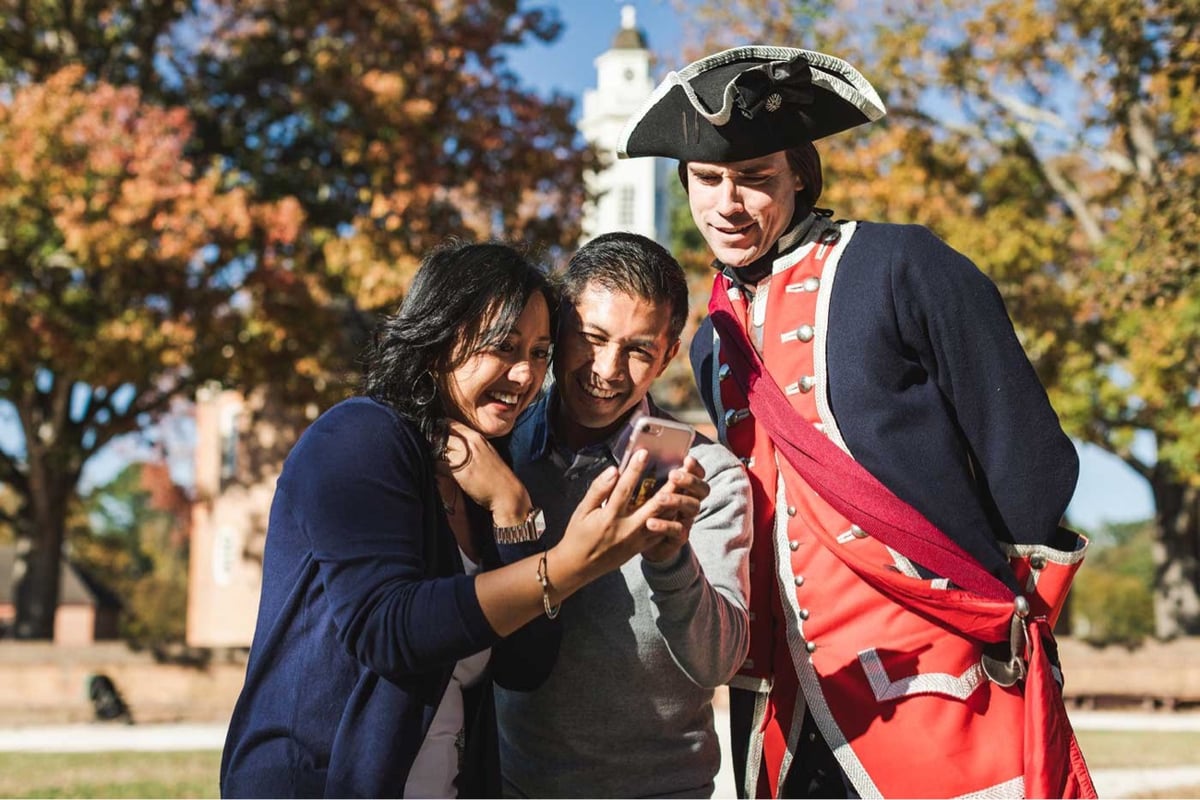
When you woke up this morning, you probably didn’t think the most interesting & thought-provoking thing you’d read today was about Colonial Williamsburg. Laura Jedeed’s piece for Politico, Where MAGA Granddads and Resistance Moms Go to Learn America’s Most Painful History Lessons, is about how folks at the living museum strive to accurately interpret the past while remaining accessible to those who might feel challenged by those truths.
In this excerpt, Jedeed describes how long-time museum interpreter Stephen Seals approaches portraying James Armistead Lafayette, an enslaved man who served as a spy for the American forces during the Revolution:
James Armistead Lafayette’s story encapsulates the paradox at the heart of America’s founding; enslavers who founded a nation to preserve liberty from tyrants. “To get a guest to understand that — to many of them it completely destroys their self-worth,” Seals said. “My job is to minimize their feelings of that destruction.”
That job can require a deft hand and emotional control, as when an older Southern man visiting Colonial Williamsburg with his granddaughter complained about what he saw as the museum’s hyperfocus on American chattel slavery when slavery has existed for millennia. “He’s like, ‘I’m kind of an expert in that sort of thing,’” Seals recalls. “My mind went, ding ding ding! Because that’s also something that I’ve read a lot about as well, which means I can have a conversation.” Seals asked the guest about the realities of enslavement in Greece and Rome, and how those institutions differed from slavery in Colonial America. The differences quickly became apparent. Classical slavery was not hereditary or explicitly based on theories of superior and inferior races, and enslaved people in Greece and Rome had many avenues to attain freedom and become full citizens.
“He actually said to me, ‘I never thought of it that way,’” Seals said. “I didn’t have to embarrass him in front of his granddaughter, which would have completely shut him down.”
In some ways, this was the exchange between two equals that it appeared to be on the surface. But Seals had to do most of the emotional and intellectual work to bridge that divide. At bottom, interpretation is a customer service job, and the power imbalance in favor of the guests is baked in. “Sometimes I’ve got to put myself to the side — actually, most of the time I have to put myself to the side — to think about where [the guests] are and what they need,” Seals remarked.
Read the whole thing, it’s interesting throughout.
In this excellent piece for the NY Times, African American historian Martha S. Jones travels to Paris to search for the signs of someone who came to France as part of a delegation to broker a peace to end the Revolutionary War, an enslaved woman named Abigail who was owned by Founding Father John Jay.
I’ve searched for Abigail a long time now, nearly 10 years. I first puzzled over her life and death as a newcomer to Paris when I stumbled upon the city’s many tributes to American founders. Exiting the Musée d’Orsay and heading to the Right Bank across the Passerelle Léopold-Sédar-Senghor, with the bateaux-mouches tourist boats passing below, I met up with a 10-foot-tall bronze likeness of Thomas Jefferson, another U.S. founder, plans for his Virginia estate, Monticello, in hand.
Hiking along the 16th arrondissement’s rue Benjamin-Franklin, I ventured to the tiny Square de Yorktown to discover that the figure seated high atop a stone plinth was Franklin himself. Fresh from people-watching from a sidewalk table at cafe Les Deux Magots, once the haunt of the 20th-century luminaries James Baldwin and Richard Wright, I made my way around the corner on rue Jacob. Pausing at number 56, I read the pink marble plaque that marks the site of the Hôtel d’York, where three of the men who shaped America’s independence — U.S. Peace Commissioners Benjamin Franklin, John Adams and John Jay — finalized the Treaty of Paris.
These fabled places are, I recognized, whitewashed. There is no mention of the enslaved people, like Abigail, who were bound to labor in the founders’ Parisian households. No site explains that during John Jay’s time in the French capital, while he brokered the new nation’s freedom, he also dealt in the unfreedom of others.
(thx, meg)
From Petapixel, a list of photographic firsts, including the first photograph (1826), the first digital photograph (1957), the first photo of the Sun (1845), and the first photograph of a US President (1843).
John Quincy Adams, the sixth President of the United States, was the first president to have his photograph taken. The daguerreotype was shot in 1843, a good number of years after Adams left office in 1829. The first to have his picture taken in office was James Polk, the 11th President, who was photographed in 1849.
Adams was born in 1767, which got me thinking about a long-standing interest of mine: who was the earliest born person ever photographed? The Maine Historical Society believes Revolutionary War vet Conrad Heyer was the earliest born. Born in 1749, he crossed the Delaware with Washington before sitting for this portrait in 1852.
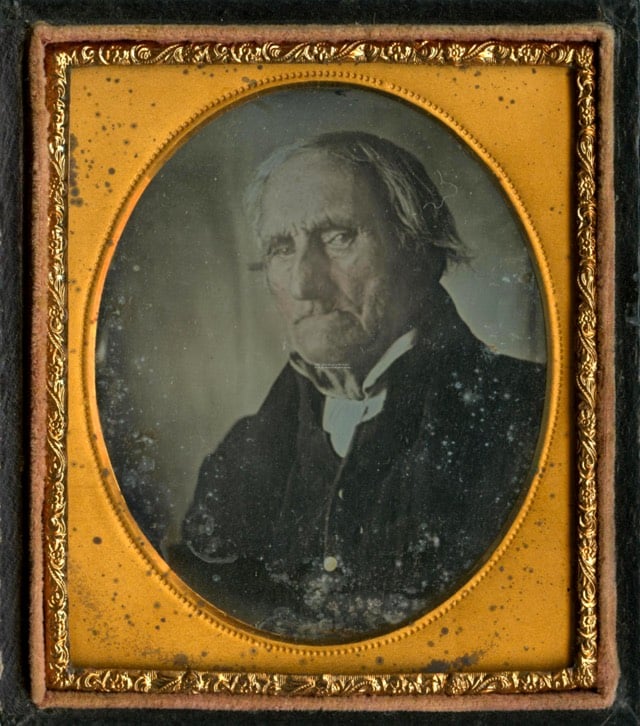
But according to the Susquehanna County Historical Society, John Adams (no apparent relation to the above Adams) was born in 1745 and was photographed at some point before he died in 1849. Other contenders with unverified ages include Revolutionary War vet Baltus Stone (born somewhere between 1744 and 1754 according to various sources) and a former slave named Caesar, photographed in 1851 at the alleged age of 114, which would mean he was born around 1737.
Still, that’s photographs of at least two people who were born in the 1740s, at least five years before the start of the French and Indian War. As children, it’s possible they could have interacted with people who lived through England’s Glorious Revolution in 1688 or even the English Civil War (1642-1651). The Great Span lives on.
I have a soft spot for photography that reaches, seemingly impossibly, back into time…e.g. early color photography. It’s an inexpensive form of time travel. The American Revolution took place back in the days before photography and the way we remember it visually is something like this:
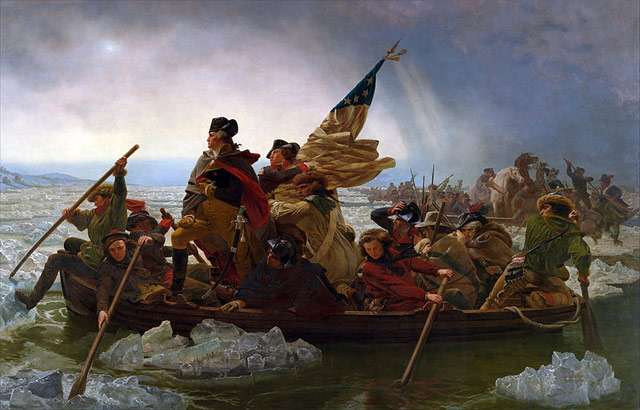
But, some Revolutionary War participants lived long enough to have their daguerreotypes taken in the 1850s and 1860s. This is a photo of Lemuel Cook, the last official surviving veteran of the Revolution1, taken sometime before his death in 1866.
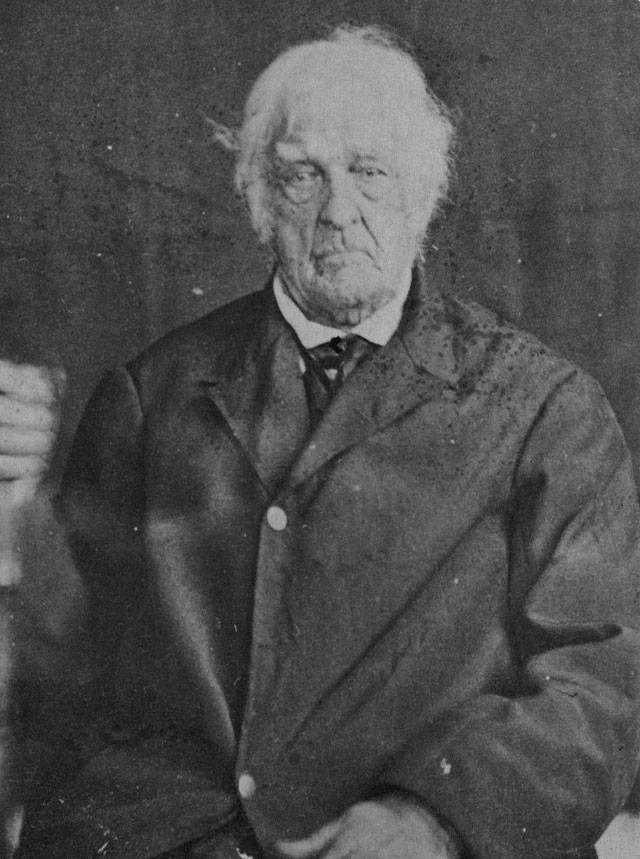
The source of many of these photos is a book published in 1864 by E.B. Hillard called The Last Men of the Revolution. The book contains six photos of surviving war vets and brief biographies of each man. (via @ftrain)
[1] Daniel Bakeman lived until 1869 but could not prove his service in the war. However, Congress passed a special act in 1867 that provided him with a war pension. Bakeman’s longevity (he lived to 109) contributed to another astounding achievement: he and his wife Susan had the longest marriage on record, 91 years. Their marriage began 3 years before the Revolution and continued until Susan’s death in 1863, right in the midst of the Civil War. Amazing. ↩
An interesting look at how news of the Declaration of Independence spread through the American colonies and around the world. Because trans-Atlantic journeys took awhile back when, the first European news of the Declaration was almost a month and a half after July 4.
News of American independence reached London the second week of August via the Mercury packet ship, which sailed with important correspondence from General William Howe to Lord George Germain, dated July 7 and 8, at Staten Island. The London Gazette, the official Crown organ, first broke the news in its Saturday, August 10 edition. A 16-word, 106-character, Twitter-esque extract from a Howe letter read: “I am informed that the Continental Congress have declared the United Colonies free and independent States.”
Later that day, the London Evening-Post included its own version of the breaking news: “Advice is received that the Congress resolved upon independence the 4th of July; and have declared war against Great Britain in form.” The same blurb appeared in the Tuesday, August 13 issue of the London Chronicle. On Wednesday, the Morning Chronicle and London Advertiser printed “Copies of the Declarations of War by the Provincials are now in Town and are said to be couched in the strongest terms.”
Another fine post by Todd Andrlik, who recently wrote about the ages of prominent Revolutionary War participants. I’m currently reading Tom Standage’s book about the history of social media and this story would fit right in.
For the Journal of the American Revolution, Todd Andrlik compiled a list of the ages of the key participants in the Revolutionary War as of July 4, 1776. Many of them were surprisingly young:
Marquis de Lafayette, 18
James Monroe, 18
Gilbert Stuart, 20
Aaron Burr, 20
Alexander Hamilton, 21
Betsy Ross, 24
James Madison, 25
This is kind of blowing my mind…because of the compression of history, I’d always assumed all these people were around the same age. But in thinking about it, all startups need young people…Hamilton, Lafayette, and Burr were perhaps the Gates, Jobs, and Zuckerberg of the War. Some more ages, just for reference:
Thomas Jefferson, 33
John Adams, 40
Paul Revere, 41
George Washington, 44
Samuel Adams, 53
The oldest prominent participant in the Revolution, by a wide margin, was Benjamin Franklin, who was 70 years old on July 4, 1776. Franklin was a full two generations removed from the likes of Madison and Hamilton. But the oldest participant in the war was Samuel Whittemore, who fought in an early skirmish at the age of 80. I’ll let Wikipedia take it from here:
Whittemore was in his fields when he spotted an approaching British relief brigade under Earl Percy, sent to assist the retreat. Whittemore loaded his musket and ambushed the British from behind a nearby stone wall, killing one soldier. He then drew his dueling pistols and killed a grenadier and mortally wounded a second. By the time Whittemore had fired his third shot, a British detachment reached his position; Whittemore drew his sword and attacked. He was shot in the face, bayoneted thirteen times, and left for dead in a pool of blood. He was found alive, trying to load his musket to fight again. He was taken to Dr. Cotton Tufts of Medford, who perceived no hope for his survival. However, Whittemore lived another 18 years until dying of natural causes at the age of 98.
!!!
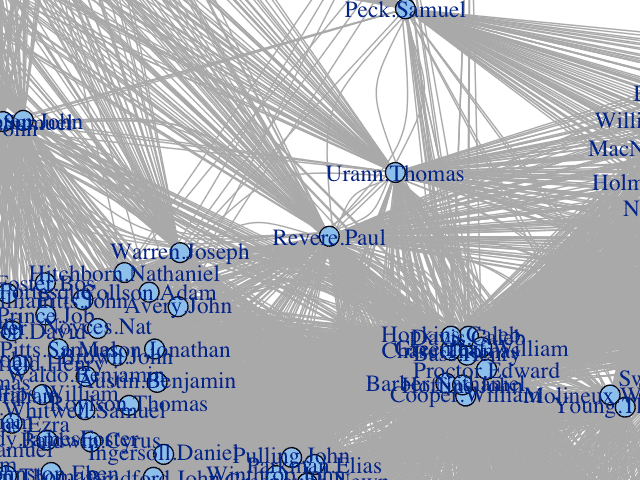
There’s been a lot of discussion recently about government programs like PRISM and how, according to defenders of such surveillance, they “only” collect metadata related to communications and not the content of the communication. In a clever article, Kieran Healy uses only the membership lists of various Boston-area organizations in the late 1770s to find out quite a lot about who might be the leaders of the nascent revolutionary cell. Even with this simple analysis, Paul Revere’s name pops out of the data.
The analytical engine has arranged everyone neatly, picking out clusters of individuals and also showing both peripheral individuals and-more intriguingly-people who seem to bridge various groups in ways that might perhaps be relevant to national security. Look at that person right in the middle there. Zoom in if you wish. He seems to bridge several groups in an unusual (though perhaps not unique) way. His name is Paul Revere.
Once again, I remind you that I know nothing of Mr Revere, or his conversations, or his habits or beliefs, his writings (if he has any) or his personal life. All I know is this bit of metadata, based on membership in some organizations. And yet my analytical engine, on the basis of absolutely the most elementary of operations in Social Networke Analysis, seems to have picked him out of our 254 names as being of unusual interest.
Now, the Crown may have suspected Revere of anti-Royalist leanings without this analysis. But with the analysis, they all but know. Get Revere and a few other highly connected nodes into jail on some trumped-up charges and, voila, maybe the American Revolution never happens or is quickly quashed. Revere and the American Revolution is an extreme example of what Moxie Marlinspike is getting at in We Should All Have Something To Hide: that breaking the law is sometimes how society moves forward.
Over the past year, there have been a number of headline-grabbing legal changes in the US, such as the legalization of marijuana in CO and WA, as well as the legalization of same-sex marriage in a growing number of US states.
As a majority of people in these states apparently favor these changes, advocates for the US democratic process cite these legal victories as examples of how the system can provide real freedoms to those who engage with it through lawful means. And it’s true, the bills did pass.
What’s often overlooked, however, is that these legal victories would probably not have been possible without the ability to break the law.
The state of Minnesota, for instance, legalized same-sex marriage this year, but sodomy laws had effectively made homosexuality itself completely illegal in that state until 2001. Likewise, before the recent changes making marijuana legal for personal use in WA and CO, it was obviously not legal for personal use.
Imagine if there were an alternate dystopian reality where law enforcement was 100% effective, such that any potential law offenders knew they would be immediately identified, apprehended, and jailed. If perfect law enforcement had been a reality in MN, CO, and WA since their founding in the 1850s, it seems quite unlikely that these recent changes would have ever come to pass. How could people have decided that marijuana should be legal, if nobody had ever used it? How could states decide that same sex marriage should be permitted, if nobody had ever seen or participated in a same sex relationship?
Seven myths about the history of the American Revolutionary War, including “Great Britain Could Never Have Won The War” and “General Washington Was A Brilliant Tactician And Strategist”.
Washington also failed to see the potential of a campaign against the British in Virginia in 1780 and 1781, prompting Comte de Rochambeau, commander of the French Army in America, to write despairingly that the American general “did not conceive the affair of the south to be such urgency.” Indeed, Rochambeau, who took action without Washington’s knowledge, conceived the Virginia campaign that resulted in the war’s decisive encounter, the siege of Yorktown in the autumn of 1781.










Stay Connected